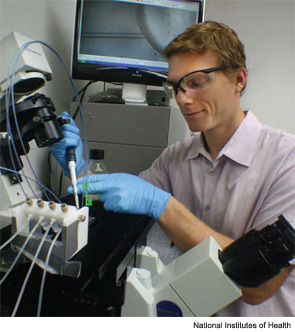So, if a prospective applicant comes to me saying that he or she wants to be a translational investigator (i.e., a translator), the first question I ask is the following: “How many languages do you speak?” If the answer is only one—clinical medicine—the obvious answer is to learn the other—science. A person cannot translate with only one language. Translation is never unitary. It is inevitably and ineluctably dyadic.
I can sympathize with the aspirations of the trainees for their academic careers, and I applaud their desire to perform relevant, patient-based research. Such research can amalgamate cutting-edge science with state-of-the-art clinical observations, elucidate the effects of a new therapy on physiology or immunology, or take an exciting new discovery on a journey from the bench to the bedside to become the next targeted therapy. The devil is in the details, however, and translational research is very difficult if you know only the clinical part and are a novice or uninitiated in the world of hard science. Bench scientists live in an ivory tower (or ivory cold room or ivory incubator or whatever). To engage them in collaboration, you need to speak their language. Learning that language—like learning German, Sanskrit, or Urdu—is no slam dunk. It takes time—and I mean years. There is no six-week Berlitz course to help you converse in biochemistry or cell biology.
Although the trainees we interviewed had remarkable life experience, working in rural clinics in Guatemala or teaching “health” to inner-city high school students, their encounters with the laboratory were in general quite transient. For some, it was a quick project during their undergraduate years that unfortunately, but not surprisingly, never came to fruition; a few hours each week is simply not enough time to make headway on a project that should be a full-time job. For the others, the lab experience was a bunch of hum-drum exercises from Chemistry or Biology 101. The trainees spoke as if the lab was a distant and foreign place, impenetrable to the ordinary intellect, governed by a special code harder to crack than the Rosetta Stone.

In Defense of Basic Research
Although basic research can be arduous and frustrating, especially now when the funding levels are in the single digits, its rituals can be learned, its heights can be scaled, and the rewards can be gained. Please remember that all of the major advances in the treatment of rheumatic disease started as basic laboratory research that was neither translational nor clinical in origin and mostly had nothing to do with rheumatology. After all, tumor necrosis factor (TNF) got its name from a factor that could kill tumor cells in mice; interestingly, the cytokine we know and love as TNF could equally well have been called cachectin. Cachectin is the same molecule as TNF, with this activity found by an inspired investigator trying to understand why animals infected with certain pathogens stopped eating and lost weight.

